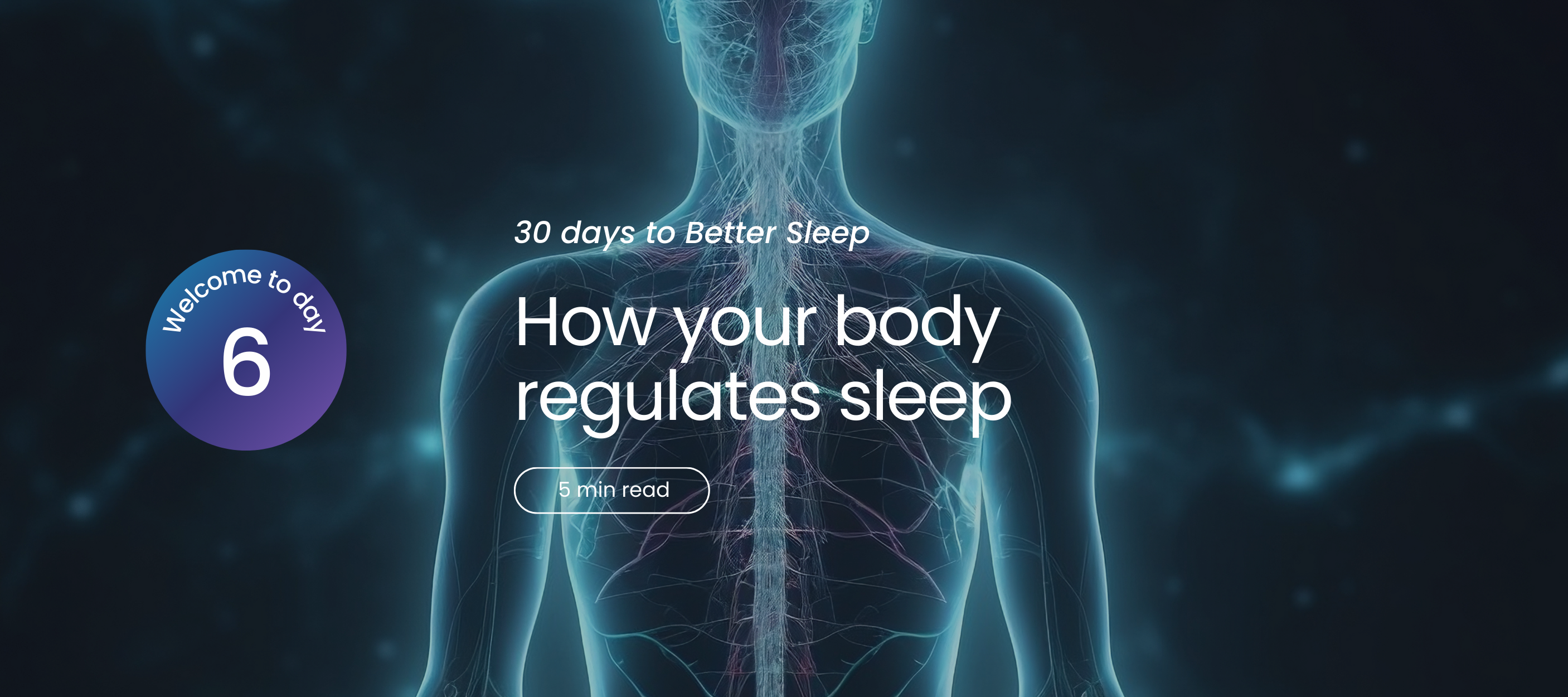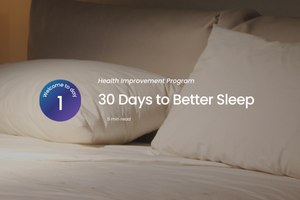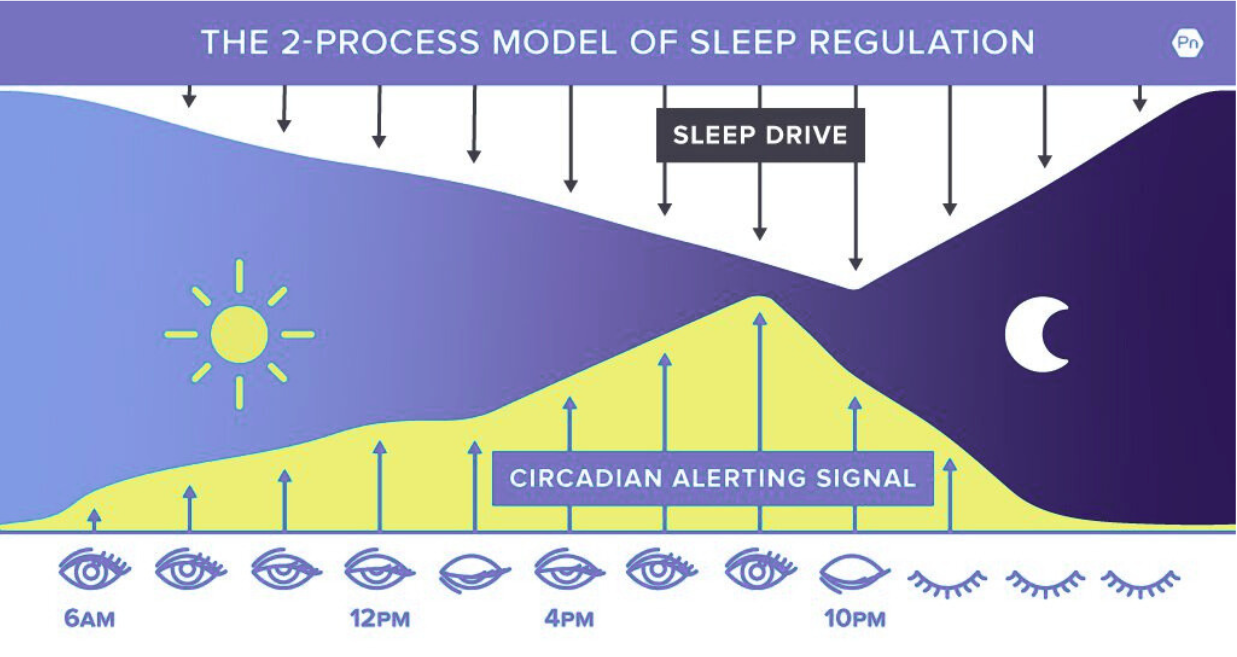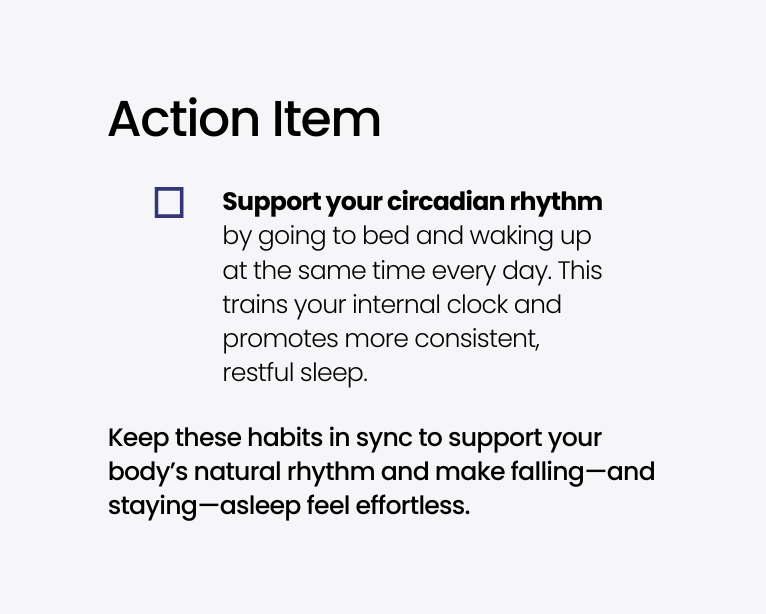
Your circadian rhythm and sleep drive regulate energy and sleep.
Consistent sleep times helps strengthen the circadian rhythm and improve sleep quality.
If you struggle with falling asleep and staying asleep, Avoid naps if you struggle with sleep, as they can disrupt your sleep drive. If you nap, keep it to 20 minutes.
Have you ever wondered why you feel alert at certain times of day, sluggish in the afternoon, and suddenly wide awake at night? This daily rhythm isn’t random—it’s driven by two key systems in your body: your circadian rhythm and your sleep drive (also called the sleep homeostat).
Your circadian rhythm acts like a 24-hour internal clock, responding to cues like light and darkness to regulate when you feel awake or sleepy. Your sleep drive, meanwhile, gradually increases the longer you’re awake, building pressure that helps you fall and stay asleep.
When these systems are aligned, your body naturally knows when to be alert and when to rest. But things like inconsistent sleep schedules, naps, or too much light at night can throw them off balance. This can lead to trouble falling asleep, low energy during the day, and feeling tired even after a full night’s rest.
Understanding how these systems work—and how to support them—can help you restore better sleep patterns, boost your energy, and feel more in sync with your body’s natural rhythm.

Your circadian rhythm and sleep drive regulate energy and sleep.
Consistent sleep times helps strengthen the circadian rhythm and improve sleep quality.
If you struggle with falling asleep and staying asleep, Avoid naps if you struggle with sleep, as they can disrupt your sleep drive. If you nap, keep it to 20 minutes.
Have you ever wondered why you feel alert at certain times of day, sluggish in the afternoon, and suddenly wide awake at night? This daily rhythm isn’t random—it’s driven by two key systems in your body: your circadian rhythm and your sleep drive (also called the sleep homeostat).
Your circadian rhythm acts like a 24-hour internal clock, responding to cues like light and darkness to regulate when you feel awake or sleepy. Your sleep drive, meanwhile, gradually increases the longer you’re awake, building pressure that helps you fall and stay asleep.
When these systems are aligned, your body naturally knows when to be alert and when to rest. But things like inconsistent sleep schedules, naps, or too much light at night can throw them off balance. This can lead to trouble falling asleep, low energy during the day, and feeling tired even after a full night’s rest.
Understanding how these systems work—and how to support them—can help you restore better sleep patterns, boost your energy, and feel more in sync with your body’s natural rhythm.

Your body is governed by two processes that control when you feel awake and when it’s time to sleep: your circadian rhythm and your sleep drive. Sleep drive is sometimes also referred to as the homeostatic component of sleep.
Your circadian rhythm is your body’s internal clock, signaling when it’s time to be alert during the day and when to rest at night. This system works by sending out signals of increased alertness around 2 hours after awakening and an hour before dinner time, and gradually decreases as the evening approaches, with a typical low point at around 3 AM - though this can shift from morning larks or night owls. The other major component of sleep is your sleep drive , which increases the longer you are awake. By night, the sleep drive peaks, which typically aligns with a decrease in alertness from the circadian rhythm to help you fall asleep at the right time.
When these two systems work in sync, it’s easier to fall asleep and wake up feeling refreshed. But if they get out of balance, your ability to sleep when you want or get the quality rest you need can be disrupted. For example, during the day, you may experience a natural dip in energy a few hours after lunchtime—this is a result of both your circadian rhythm signaling a drop in alertness, often referred to as the “afternoon slump” or "siesta". If you are particularly sleep deprived, and therefore have a higher sleep drive, this dip may feel particularly pronounced.
It’s important to note that if you’re having trouble staying asleep at night, taking naps during the day might interfere with your ability to fall asleep at night. However, if naps don’t affect your nighttime sleep, they can be a helpful way to boost your energy, especially if you keep it to brief 20 minute naps.






THE DOCTORS BRAND™
America’s leading clinically proven nutraceutical brand for better sleep, less anxiety and less pain
*These statements have not been evaluated by the U.S. Food and Drug Administration. Our product is not intended to cure or treat any disease.
MDbiowellness
Contact us
(805) 977-5709
M-F 9am-5pm PT
hello@MDbiowellness.com
© 2023 MDbiowellness